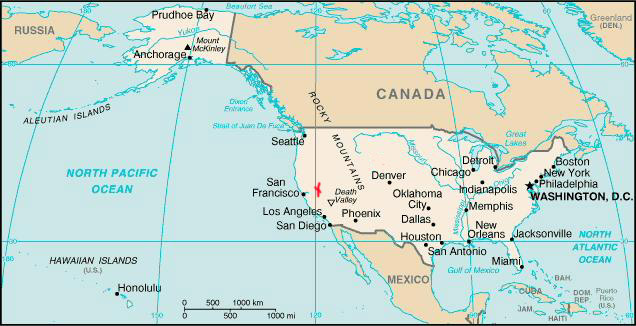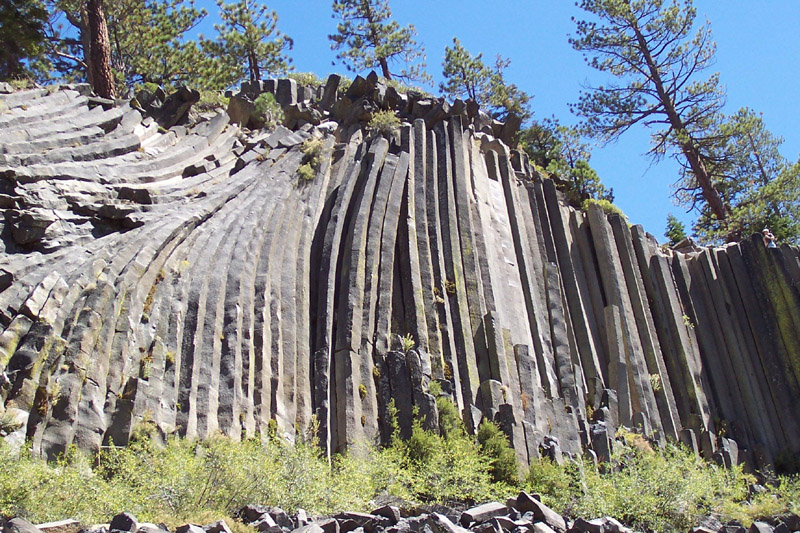 |
 |
DEVILS POSTPILE - USA


| Location: | Geographic coordinates: | Area: | Area - comparative: |
| North America, bordering both the North Atlantic Ocean and the North Pacific Ocean, between Canada and Mexico. | 38 00 N, 97 00 W | total: 9,629,091 sq km | About half the size of Russia; about three-tenths the size of Africa; about half the size of South America (or slightly larger than Brazil); slightly larger than China; about two and a half times the size of Western Europe |
| Population: | Languages: | Capital: | Currency: |
| 280,562,489 (July 2002 est.) | English, Spanish (spoken by a sizable minority) | Washington | US dollar |


| Types of rocks used on the monument: | Columnar Basalt (Igneous rock) |
Devils Postpile is a dark cliff of columnar basalt near Mammoth Mountain in extreme northeastern Madera County in eastern California. The postpile was created by a lava flow sometime between less than 100,000 years ago (according to current potassium-argon dating) to 700,000 years ago (according to other dating methods). The source of the lava is thought to have been somewhere near Upper Soda Springs campground at the north end of Pumice Flat on the floor of the Middle Fork of the San Joaquin River, from where it flowed to the site of the Postpile, was impounded by a moraine, and reached a thickness of 400 feet (newer estimate) to 600 feet (older estimate). In any event, the lava that now makes up the Postpile was near the bottom of this mass. Because of its great thickness, much of the mass of pooled lava cooled slowly and evenly, which is why the columns are so long and so symmetrical. Columnar jointing occurs when certain types of lava cool; the joints develop when the lava contracts during the cooling process. A glacier later removed much of this mass of rock and left a nicely polished surface on top of the Postpile with very noticeable glacial striations and glacial polish. Devils Postpile was once part of Yosemite National Park, but discovery of gold near Mammoth Lakes prompted a boundary change that left the Postpile on adjacent public land.
© Guillermo Rocha, P. G. / Brooklyn College Geology Department